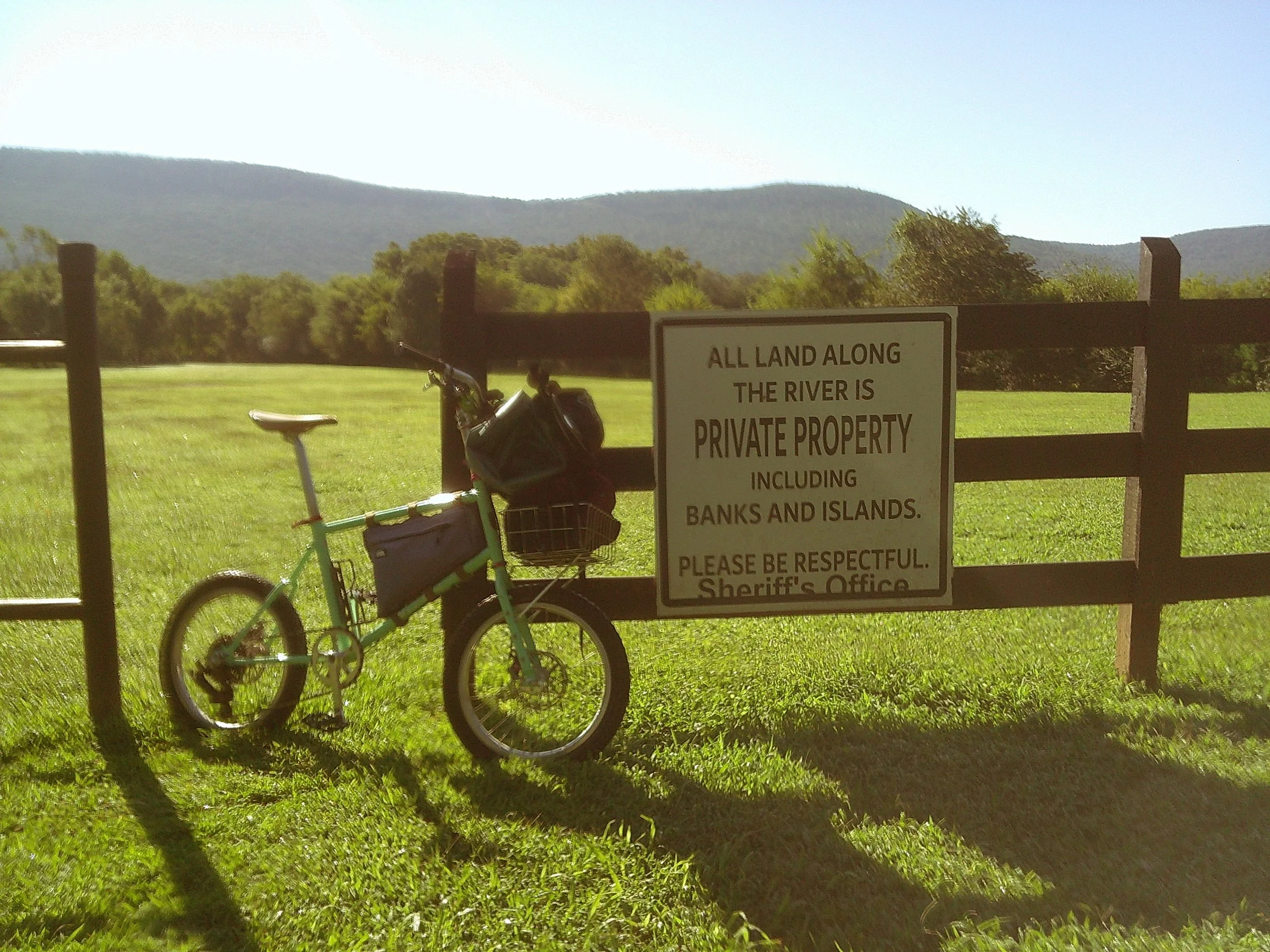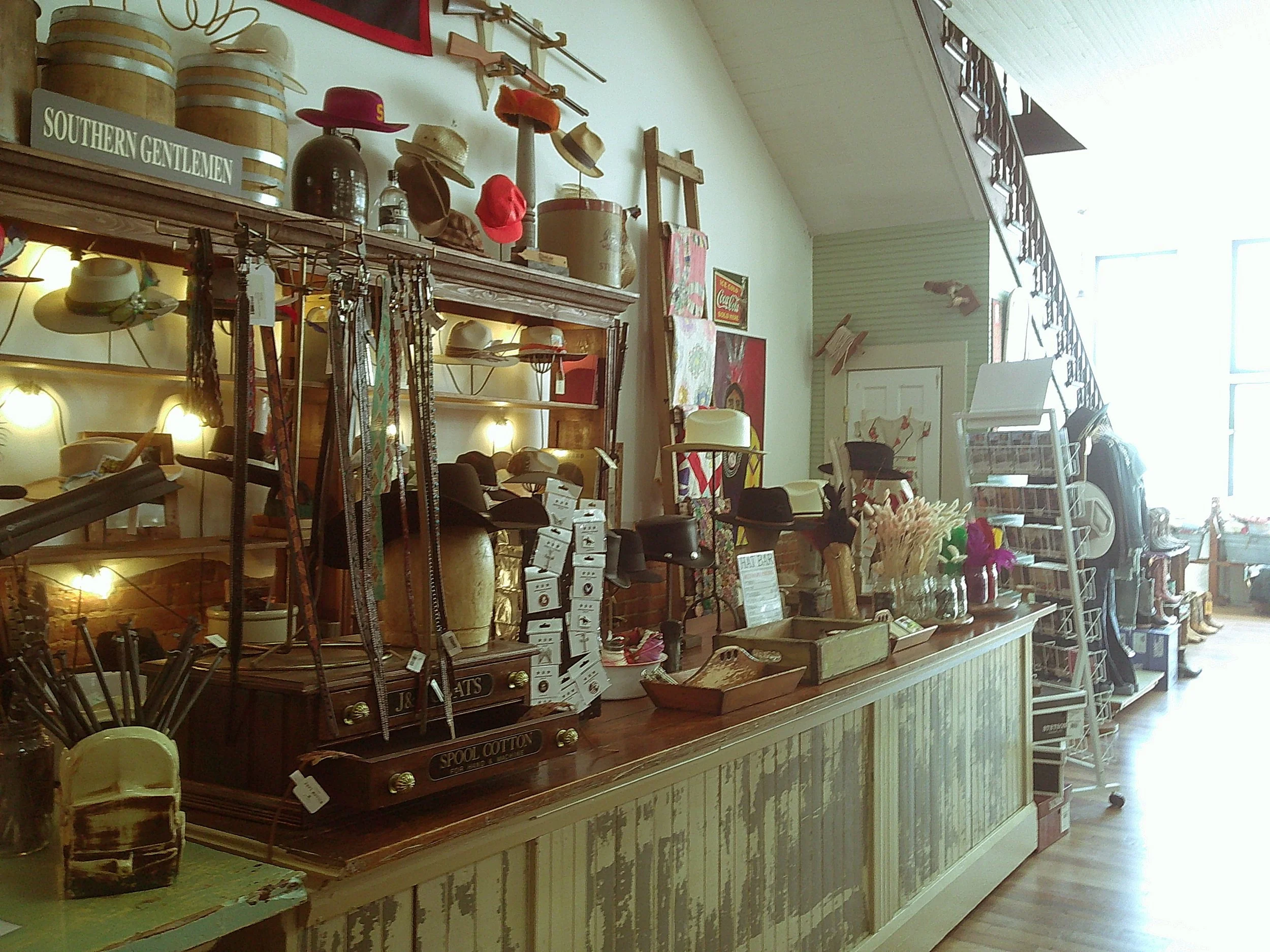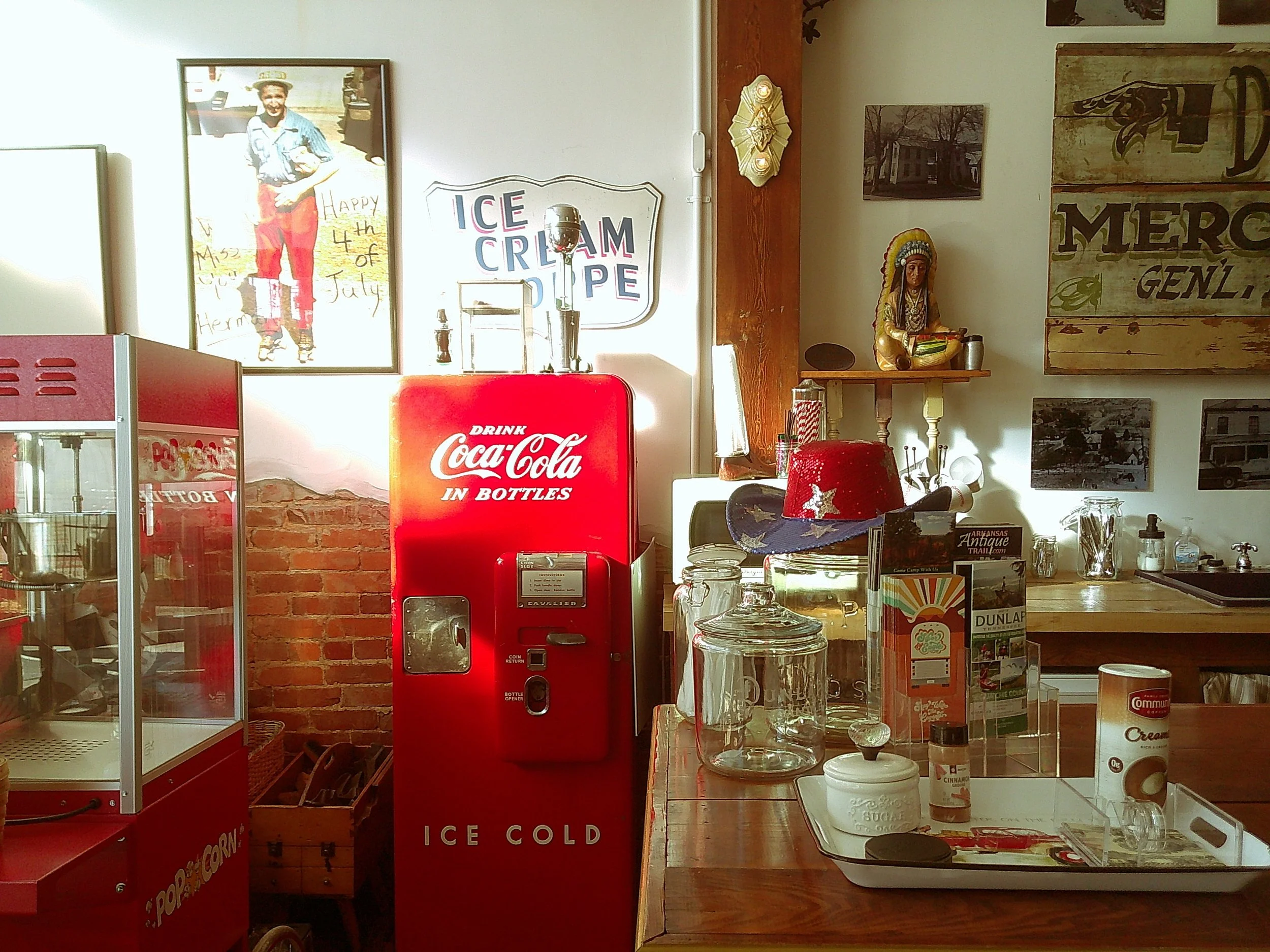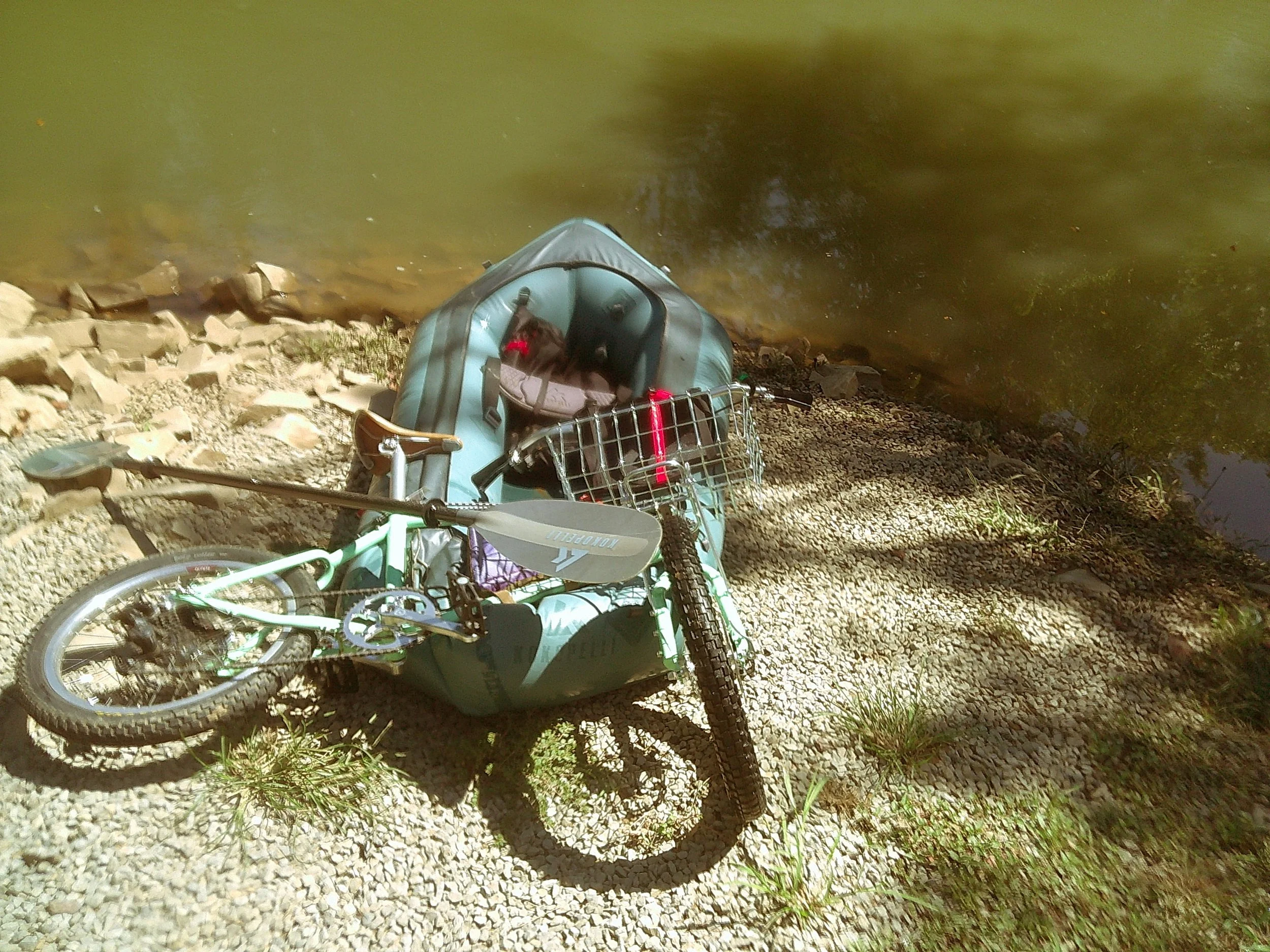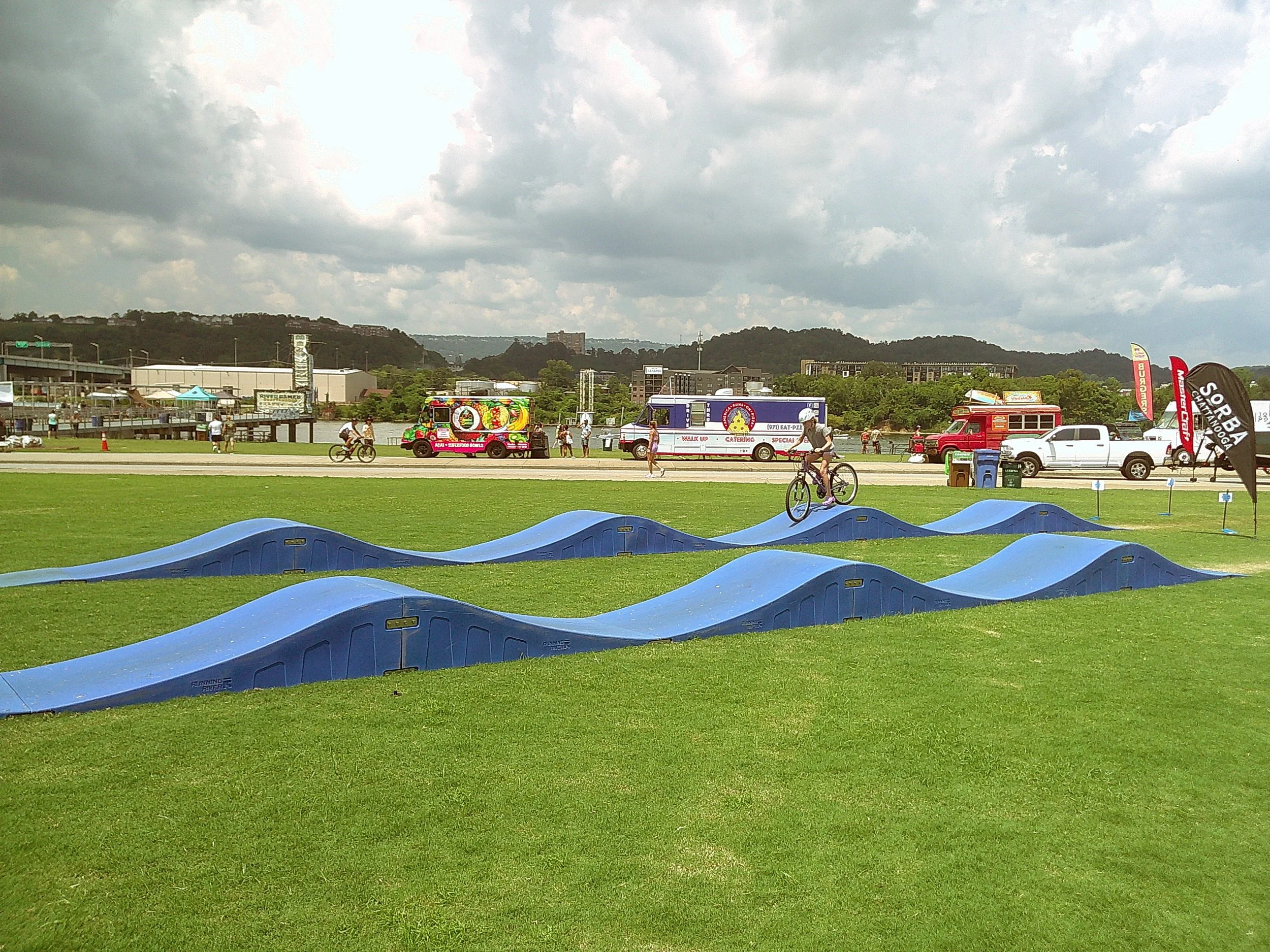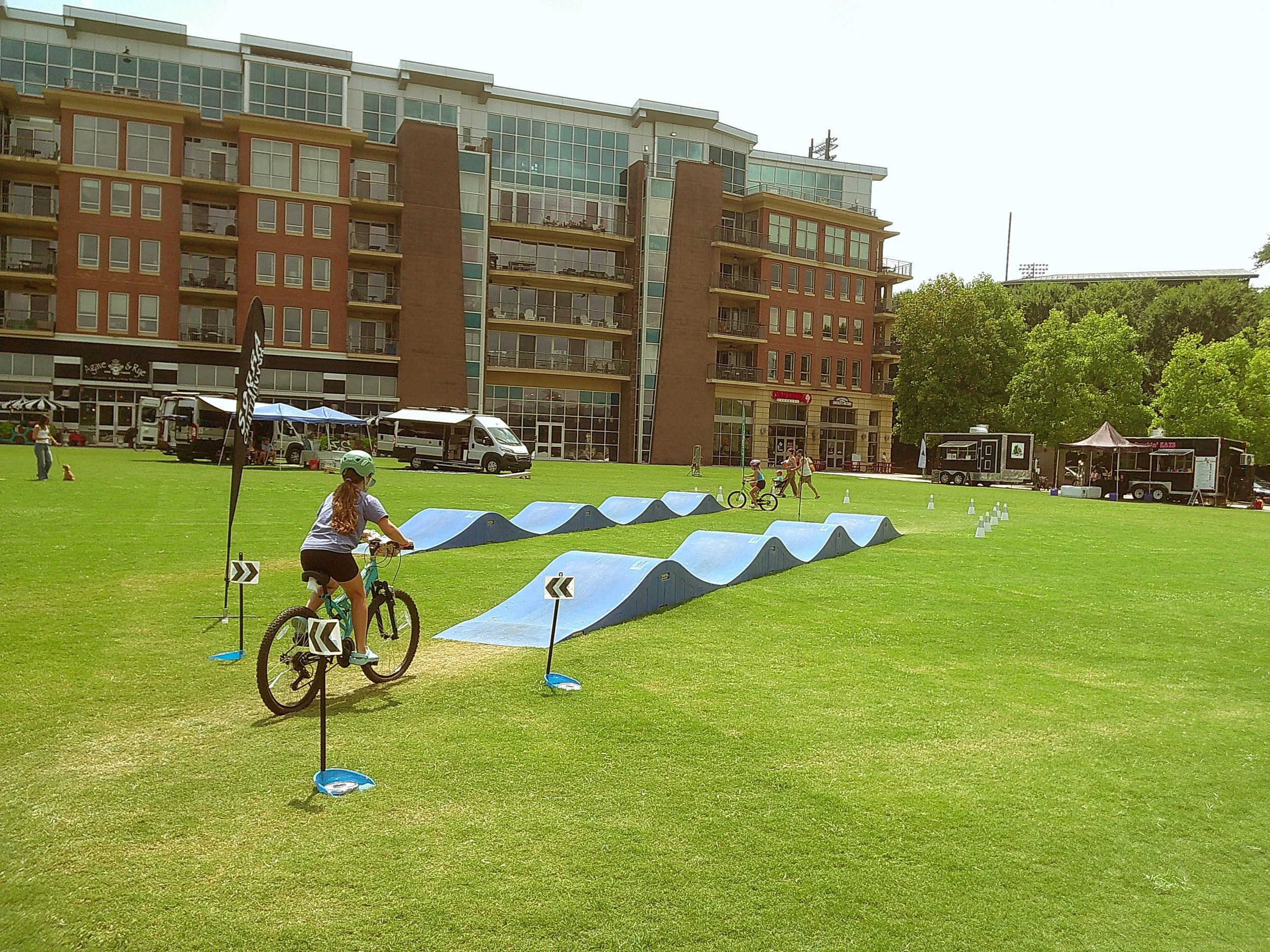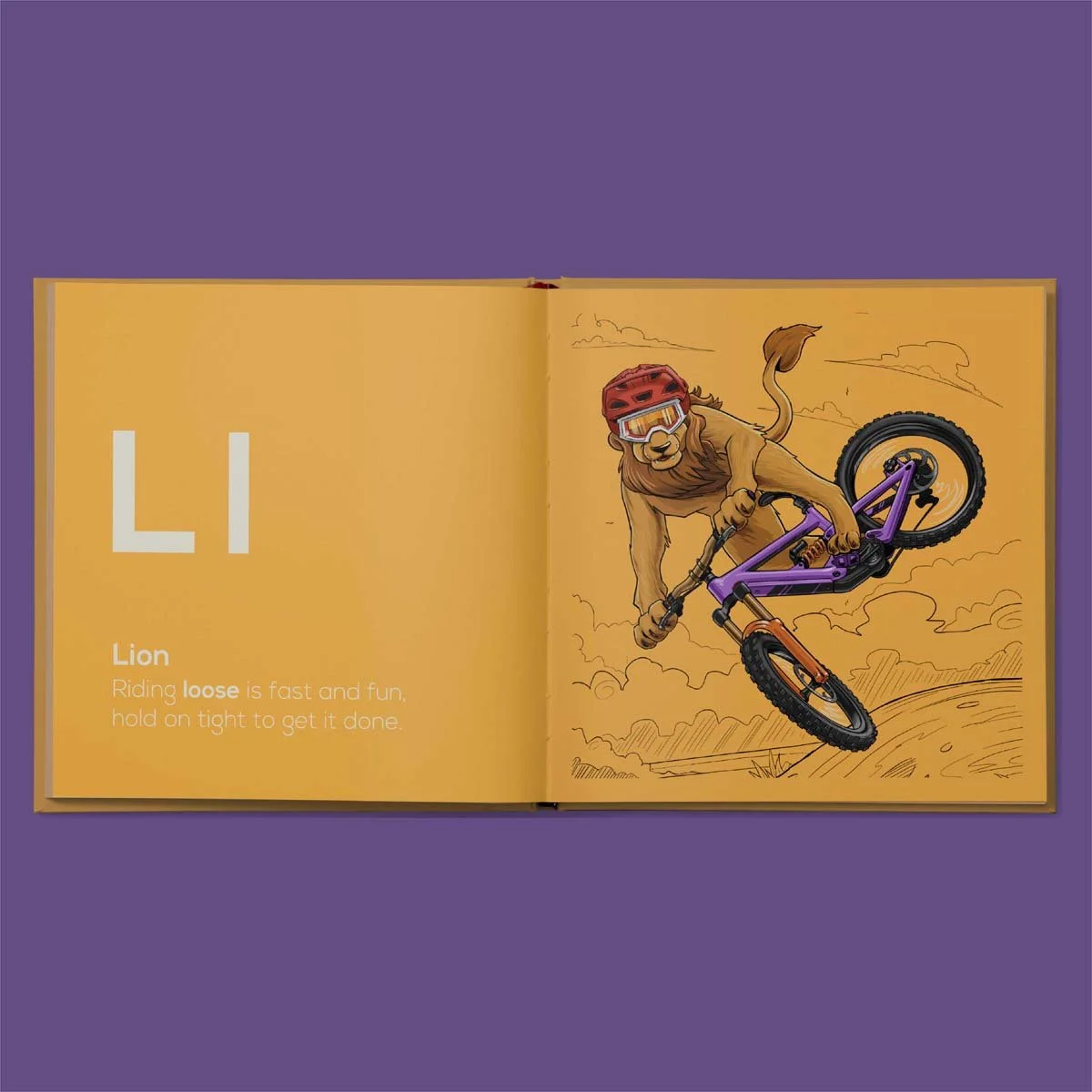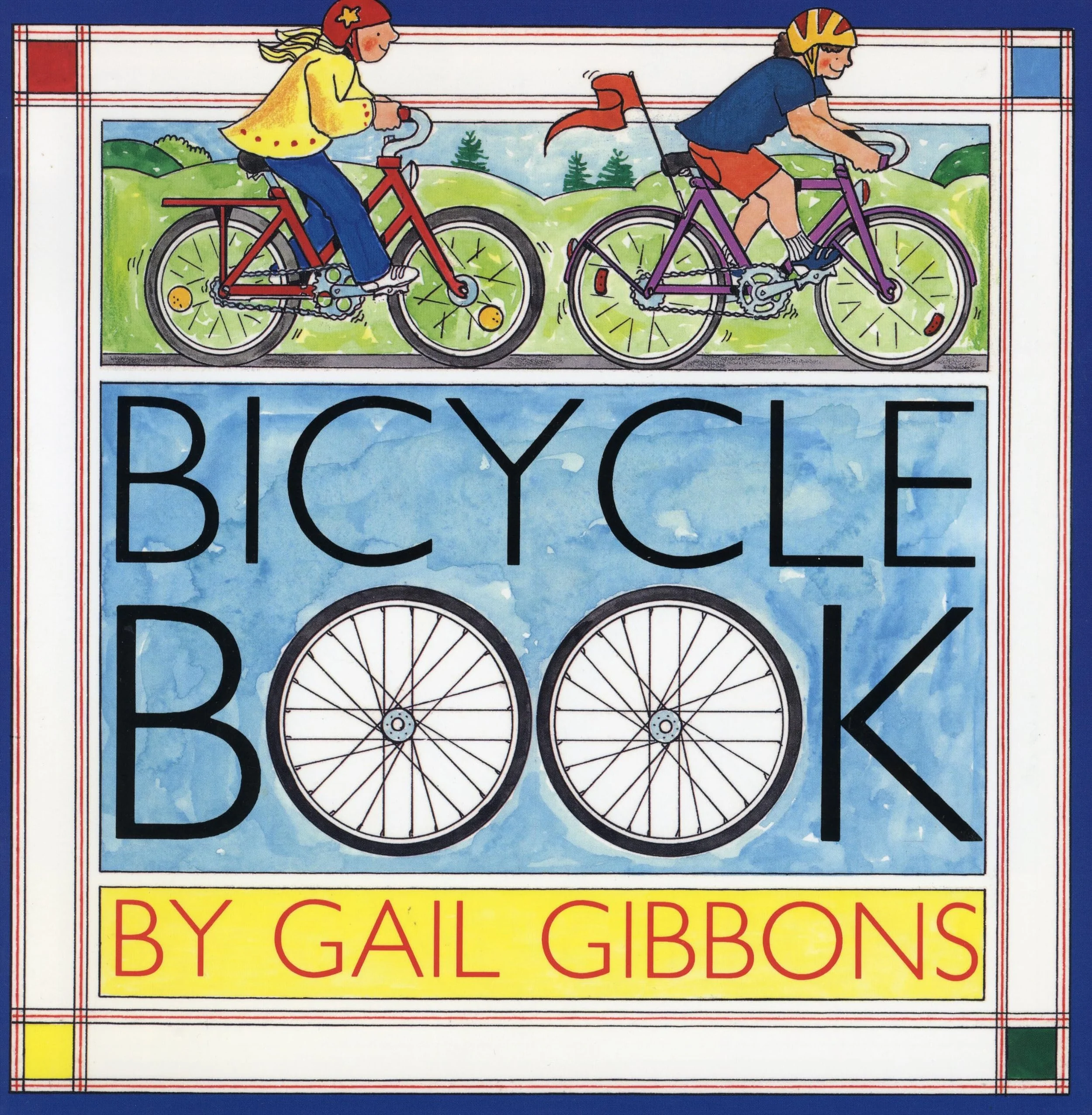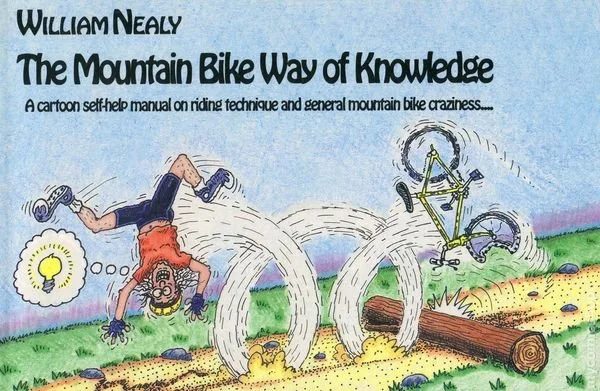Dunlap Bikerafting
In the heart of the beautiful Sequatchie Valley, Dunlap, TN is the next small town destination.
The downtown area hosts a beautiful commons area for Saturday markets and events, a playground and splash pad for the kids, and plenty of shops and restaurants with unique charm, and plenty of opportunities for outdoor recreation, all set against a backdrop of scenic valley farmland.
Scenes inside Dunlap Merchantile
With the recent success of the Cycle Sequatchie events and promotion of several routes on BikeTN.com, the area has become a hotbed of road cycling tourism. In 2018, the city of Dunlap and Sequatchie County opened up two public access ramps on the Sequatchie River with hopes of boosting ecotourism through paddling. On the 116 mile Sequatchie River that flows through mostly private farmland, there are only 4 public access points–two in Pikeville and two in Dunlap.
While publicized routes on BikeTN.com and events like Cycle Sequatchie have no doubt boosted ecotourism in the area, it’s unclear if the public access points on the river have made an impact on local tourism. There are no outfitters and no guides on the Sequatchie River. Signs at both access points gently remind you you’re on private land.
In this small southern town, Bikerafting might just be the most easy, perfect Dunlap day trip.
What is “Bikerafting?”
Bikerafting is the art and multisport adventure of strapping a packraft to a bike, riding to a put-in, blowing up your raft, and strapping the bike to the bow. Essentially, in this instance, you’re using your bicycle to self-shuttle an easy paddle down the Sequatchie River.
What equipment is needed?
A bike. Nearly any kind will do. I used my “travel bike,” a 20 inch Velo Orange Neutrino.
A packraft. One weighing less than 10 pounds will be easier to carry on your bike. I use a Kokopelli Rogue R-deck.
Some way of carrying your raft, paddle, PDF on your bike. I use a basket and a Revelate Designs harness for bikepacking.
Some way of strapping your bike to your raft. I just used one Voile strap to secure my front wheel from flopping around and two bungie cords.
The ride:
Park at 1450 Hudlow Road access. The 5 mile/30 minute ride to the 751 Old York Hwy. put-in is mostly flat with one hill climb. The ride on these rural roads was somewhat bumpy at times, but with extremely low traffic and farmland scenery abound. You’ll ride down Hudlow road where you’ll notice the bridges that will begin to signify the end of your paddling adventure. Continue straight onto Ridge Road. You’ll come through town on main street where you can take a two block detour to places like Sunny Valley Coffee and Thrift, Dunlap Mercantile, and Sequatchie Brewing, to name a few. Once through town, you’ll turn on Old York Hwy and you’ll see the parking lot well marked on your right.
The paddle:
Once you’re on the river, settle in for a 1.5 hour easy paddle on class 1 moving water. Depending on the water levels, your boat might scrape the ground in areas or need to portage. Check water levels here. Typically, packrafts only need a few inches of water to float. On this particular unseasonably cool August morning, water levels were just below two feet..
The Sequatchie River is an easy paddle with a few areas of swifter current creating a few exciting shoals, perfect for the beginner paddler. The paddle is serene and quiet with views of the Cumberland Plateau. As you paddle, you’ll see and hear the plop of turtles into the water and blue herons flying overhead as you, the outsider, approaches. Occasionally, a cow will moo as you float past. At times the river banks look washed away with sand and other times they are high and rocky and look at if they hold secrets. After about a three mile paddle, you’ll see the ramp where you parked to take out. You know you’re getting close when you go under two bridges, one not in service anymore, then the river will split briefly around an island and provide a fun s-turn rapid just near the end of your journey.
Take-out at 1450 Hudlow Road.
The Case for More Exploration and Play
This weekend the second annual River Games was held in Chattanooga at Ross’s Landing. Claiming to be the “South’s largest extreme sports festival,” the three day event featured wakesurfing competitions, slacklining, diving, skate ramp and kayak launches, and Red Bull Creepers, an international climbing competition that made its U.S. debut.
I served as a vendor pulling double-duty for SORBA Chattanooga and White Oak Bicycle Co-op by offering an “activation” on the greenspace with our modular pumptrack. Since the pumptrack’s purchase by River City Company last September, this is only the fourth time the pumptrack has been available to the public.
Anecdotally, the pumptrack was by far the most popular activity amongst the activation booths. Other activations included a trampoline, nets to lounge in, lawn games, and the different jumps/launches into the water that the public could do. It’s hard to say for sure, as I don’t know if other activations counted their sign-ins, but 385 people throughout the weekend signed the waiver to ride the pumptrack. Dozens more rode but didn’t sign the waiver.
Three hundred and eighty five sign-ins isn’t that impressive when the festival was expecting 10,000-12,000 attendees if you included Riverfront Nights and the music concerts that followed each night. What was impressive though, was the amount of children simply running up and down the rollers every night after we closed it down at 8 p.m. As one of my partners at the city witnessed and stated,
“This proves the case for more play structures at the Riverfront.”
That quote stuck inside my brain like a fly caught in a spiderweb. That is why I continue to keep advocating for a permanent pumptrack, bicycle playgrounds, and traffic gardens.
This type of infrastructure promotes exploration and play by bicycle far more than a bike lane or a trail. Sure, it’s a good way to exercise and recreate, but it further pushes the boundary of balance, coordination, body positioning, and personal challenge. Those humps on the pumptrack were taller than some of the kids riding them. Of course, falls happened and a few tears were shed (especially with the heat) but more often than not, children and adults rode away with a smile, undoubtedly feeling a sense of pride and pleasure.
From a professional mountain bike coaching stand point, pumptracks are a great place to hone real trail skills like pumping for efficiency, cornering, and pressure control. But what I witnessed this weekend goes beyond a hard skill. Exploration and play on a bicycle is fun, boosts confidence, and enhances creativity and problem solving skills. Since this “activation” was technically volunteer and not part of my safety programs, I couldn’t log it as a program and therefore, I didn’t do any teaching. Kids had to figure out how to get over the rollers themselves, judging speed, distance, and height, all while mixing in the complexity of balance and steering. Being able to juggle all those things at once when you don’t even reach double digits in age is an impressive thing to witness.
It’s been my theory for years that bicycles are one of man’s greatest inventions. They are transportation, a tool for exploration and adventure, and obviously, a great way to exercise and get outside. What I witnessed this weekend with a “pop-up” pumptrack was that experiential, play based learning can happen at almost any age. Our infrastructure and built environment play a big role in our health and can provide opportunities for recreation, exploration, and play. Pumptracks, bicycle playgrounds, and traffic gardens are simply new opportunities to expand what we already know: Bicycle exploration enhances physical and cognitive growth and encourages social interaction through a built environment.
Seven Great Books about Bicycles for Children Under 7
Kids love bikes. Kids love books. Both are tools for building knowledge, resiliency, and gaining insight into the world around us. Here’s five excellent books to share with your young ripper:
Shred Til Bed: The Mountain Bike Animal Alphabet
By Dan Necklen, illustrated by Mike Hearsey
Brought to you by Kids Ride Shotgun, the company that makes tow ropes and shotgun seats for littles, is one of our favorites. The illustrations of animals riding rad mountain bikes are fantastic. Even parents might learn a few new animals, like the numbat. The rhymes associated with the letters of the alphabet are short and catchy and I’ve found myself repeating them throughout a ride.
The Girl and the Bicycle
By Mark Pett
I love wordless books for very young children. With proper illustrations, the story can be conveyed clearly without words, and helps to build comprehension at an early age. This wordless book tells the story of how a young girl works hard to save up for her new bicycle. Try not to choke up as a somewhat obvious, yet heartwarming twist is in store for her at the end.
Duck on a Bike
By David Shannon
A silly duck decides to borrow a bike and ride around the farm. None of the other animals seem that interested, until a swarm of kids on bikes rides by. Easily the funniest book in the lineup, personally, I’m a sucker for animals on bikes and a story about what happens when humans (or moms) are away.
Bike on, Bear!
By Cynthea Liu, illustrated by Kristyna Litten
“Bike on, Bear!” follows the story of a very smart, calculated bear as he learns to ride a bike and keep up with his friends. In a moment of urgency, bear tests his mettle and of course, learns. I love the illustrations in the book and how bear is able to overcome. If your child is struggling to learn to ride because they are simply “overthinking it,” this book is for them.
Bicycle Book
By Gail Gibbons
Younger kids who still need to be read to and and older kids who can read will both delight in this non-fiction book about bicycles. When my son was younger, he enjoyed the short history of the bicycle and all the different types of biking. I love the simplicity of this book and how it exposes kids to maintenance, safety, and history.
Etiquette is a Big Word
By Lindsey Richter and Heidi Ashwell, illustrated by Kristina Wayte
Izzy is a mountain biker who goes for a ride on a new trail. This book is written in rhyme and is simple, but has some cute rhymes in a story format that drives home real trail etiquette principles. Parents new to mountain biking might even learn a thing or two about right-of-way. The primary author of this book, Lindsey Richter, founded Ladies AllRide, which offers nation-wide mountain bike clinics for women, and spent years as a professional racer. Proceeds of the book benefit several cycling organizations such as Girls AllRide, World Bicycle Relief, and the Be Good Foundation.
The Mountain Bike Way of Knowledge
By William Nealy
When I started mountain biking as a middle schooler around the year 2000, I purchased a couple of mountain bike books at a used book store. These books mostly focused on skills and maintenance, and many are not very relevant today except for “The Mountain Bike Way of Knowledge.” While not necessarily a children’s book, I read it first as a middle schooler and still have the same copy today, which I read to my son. It’s 90s style illustrations are nothing short of nostalgic and hilarious. While the style of clothes and bikes may have changed, a lot of the philosophies still reign true today. In my opinion, every mountain biker no matter the age or the skill should give these pages a turn.
Books I didn’t love:
Everyone Can Learn to Ride a Bike
Chris Raschka
Chris Raschka is author/illustrator of “A Ball for Daisy,” a Caldecott Medal winner. While similar in style, this book falls short. The few words in the book don’t add much to the story and I find myself creeped out by the weird bending in the necks of the watercolor characters. The book also mentions training wheels as being able to help you balance, and as a professional in the industry, I can confidently say that they do NOT help you balance.
Franklin Rides a Bike
By Paulette Bourgeois and Brenda Clark
Franklin the turtle was a fairly popular book series and TV show in the 1990s, but unlike William Neely’s 1989 Mountain Bike Way of Knowledge, I’m not sure this relic holds up. The story is too simple and predictable. If you’re looking for a story to motivate your child into riding, try “Bike On, Bear!” instead.
An Introduction…
If you’ve stumbled upon this website and this blog post, welcome! Adventure Field Guides for Kids is a longtime dream that is just beginning to come true.
Why?
Several years ago I had the idea of creating what would be like Frommer’s travel guide books, but for kids in the outdoors. We live in the Chattanooga, Tennessee area which is often touted as a hotbed of outdoor recreational opportunities. I’m involved in a lot of different projects, committees, and advocacy groups in town and for “Outside Magazine’s 2015 Best Town Ever” we really don’t do a great job of being accessible or inclusive.
Accessibility focuses on removing barriers to participation while inclusivity considers the diverse needs of many different groups of people to create a welcoming and equitable environment.
Improving accessibility is a portion of what I do for a living. If you don’t know me, I’m the director of Tennessee’s largest bicycle safety education program. Nearly all of the 103 programs I did in 2024 provided access to bicycles, helmets, and education for underserved kids in Southeast Tennessee. When I bring bicycles and set up obstacle courses for my second graders, I’m providing access.
But what am I really doing for inclusivity? Sure, one way of being inclusive is just showing up and having a positive attitude for the kids. I feel like Chattanooga has done a great job of promoting our general tourism efforts towards families with great attractions such as the Tennessee Aquarium, See Rock City, Ruby Falls, and several other destinations. Chattanooga promotes itself as an outdoor town, too, with the recent campaign and declaration of America’s First National Park City. But are there any efforts to make ecotourism more inclusive for families with kids under 12?
Chattanooga: We need to do better at making our outdoor spaces, adventures, and recreation opportunities more inclusive to young kids.
This is the primary reason for launching this self-publishing journey. Introducing children to outdoor recreation and adventure at an early age will help foster their appreciation for nature, introduce them to lifelong physical activities they can participate in, and improve overall mental health and well being. Getting kids outside riding bikes, hiking, camping, paddling, birdwatching, and enjoying our natural resources will help set them up for future success and hopefully, one day, they may become our next stewards of local parks and advocates for conservation. Adventure Field Guides for Kids is a starting point to foster this love for outdoor recreation.
This is me, with my husband and son. We don’t have many family photos where everyone is all smiles, looks great, and is acting appropriately. We’re adventurers, not photographers or models. #sorrynotsorry
